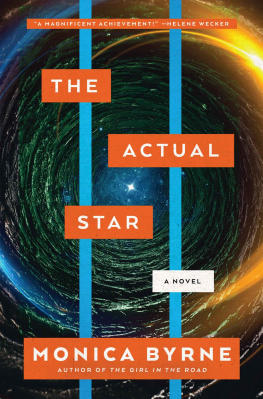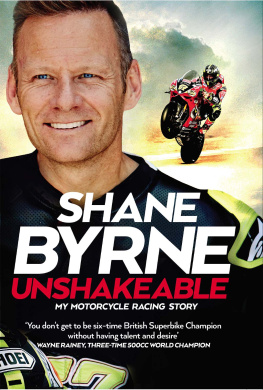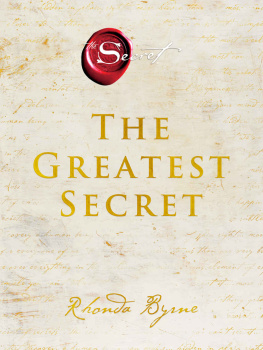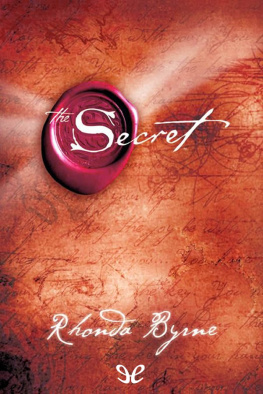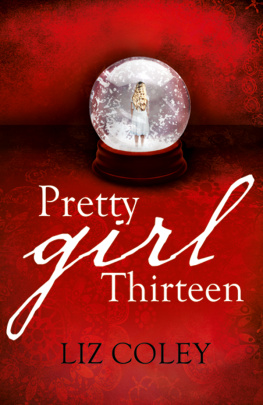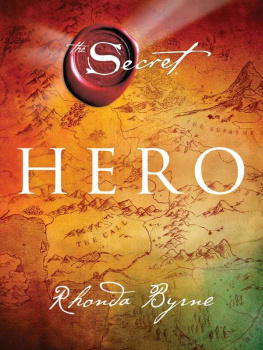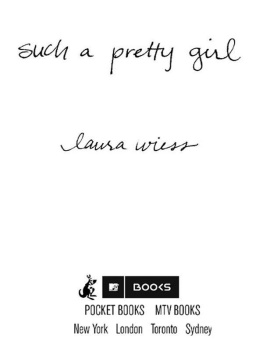Andrew Byrne - The Pretty Girl Killer
Here you can read online Andrew Byrne - The Pretty Girl Killer full text of the book (entire story) in english for free. Download pdf and epub, get meaning, cover and reviews about this ebook. year: 2019, publisher: Penguin Random House, genre: Non-fiction. Description of the work, (preface) as well as reviews are available. Best literature library LitArk.com created for fans of good reading and offers a wide selection of genres:
Romance novel
Science fiction
Adventure
Detective
Science
History
Home and family
Prose
Art
Politics
Computer
Non-fiction
Religion
Business
Children
Humor
Choose a favorite category and find really read worthwhile books. Enjoy immersion in the world of imagination, feel the emotions of the characters or learn something new for yourself, make an fascinating discovery.
- Book:The Pretty Girl Killer
- Author:
- Publisher:Penguin Random House
- Genre:
- Year:2019
- Rating:4 / 5
- Favourites:Add to favourites
- Your mark:
- 80
- 1
- 2
- 3
- 4
- 5
The Pretty Girl Killer: summary, description and annotation
We offer to read an annotation, description, summary or preface (depends on what the author of the book "The Pretty Girl Killer" wrote himself). If you haven't found the necessary information about the book — write in the comments, we will try to find it.
The Pretty Girl Killer — read online for free the complete book (whole text) full work
Below is the text of the book, divided by pages. System saving the place of the last page read, allows you to conveniently read the book "The Pretty Girl Killer" online for free, without having to search again every time where you left off. Put a bookmark, and you can go to the page where you finished reading at any time.
Font size:
Interval:
Bookmark:

This is the story of Christopher Wilder: the surf-loving son of a decorated naval war hero, born in the suburbs of Sydney, who became the most wanted man in America a psychopathic serial killer who slaughtered more than sixteen young women in the USA and is the prime suspect in the infamous Australian Wanda Beach murders.
Wilder was handsome and charming, and time and time again he managed to convince beautiful young women that he was a fashion photographer looking to help them start a career in modelling. What followed were some of the most brutal, sadistic crimes the world has ever seen as well as a years-long police operation, dogged by missed opportunities and bad decisions, to track the killer down.
Featuring new evidence unearthed from case files and interviews with FBI agents, witnesses and survivors, some of whom have spoken for the first time since the horrendous crimes were committed, The Pretty Girl Killer takes us right into the mind and moment of one of Australias most heinous exports.

This book depicts scenes of violence and sexual assault based on reported events.

This is the chilling and definitive true story of one of the worlds most extraordinary serial killers, infamous in both Australian and American criminal history.
Christopher Bernard Wilder, born in the leafy suburbs of Sydney, was the perfect model of an Australian playboy, who became the most wanted man in America and the perfect model of a psychopathic killer. How this surf-loving son of a decorated naval war hero grew up to become a sadistic monster, slaughtering as many as sixteen women, is as fascinating as it is frightening.
The ruthless and terrifying Wilder had been sexually harassing, molesting, abusing, kidnapping, torturing and murdering young women and girls for over two decades when he went on the run in one of the most notorious killing sprees in US history. On his frenetic final odyssey, Wilder would drive thousands of kilometres, crisscrossing the US, abducting and murdering a string of innocent victims. He had more than 500 FBI special agents and hundreds more local sheriffs and police officers pursuing him in the countrys biggest ever manhunt.
Wilders modus operandi was faultless, honed to perfection over the best part of two decades. He targeted only pretty girls, bewitching them with a few carefully rehearsed flattering words, brazenly walking up to them on crowded beaches, in busy shopping malls and at beauty pageants. Adorned with flash jewellery and expensive suits, he would pretend to be a professional photographer and lure them with promises of modelling careers. They were young, good-looking and vulnerable to a smiling stranger who promised to make them famous. Once captured, he tortured them for hours, sometimes days.
There were occasions when Wilder was accused, investigated, arrested, even charged and put before the courts, but he was never jailed and always walked away with the most lenient of sentences, free to abuse and kill more women. This incredible ability to quite literally get away with murder was due to a few crucial factors.
He was wealthy, which meant whenever he did end up before the courts he could call on the best and most expensive defence lawyers.
It is important to remember, too, that Wilder operated in an era in which sexism and misogyny were still deeply ingrained, particularly when he started out in the 1960s. Although a second wave of feminism started in the 1960s thanks to books like Betty Friedans The Feminine Mystique , life for women in the late sixties and early seventies was still far from ideal. They were badly underpaid compared to men, still doing the lions share of the housework and child rearing, still considered too sympathetic and fragile to be on court juries in most US states and remaining banned from several prestigious colleges such as Yale, Princeton and Harvard. Although the birth control pill was legalised in 1960, it could still only be prescribed to married women, pregnancy was still a sackable offence, only 6 per cent of doctors were women and one of the most popular TV variety shows was Hugh Hefners Playboys Penthouse . Many of the screen icons were a hangover from the fifties highly sexualised but vulnerable and in need of protection, such as Marilyn Monroe. Stars like Jane Fonda and Brigitte Bardot may have been less vulnerable, but they still got their star rating from being overtly sexual and the plaything of the male hero.
It was a time, in both Australia and the US, when police and the courts turned a blind eye to domestic violence (not even a term until the mid-seventies) and often lacked earnestness when it came to the investigation of sex crimes against women. There was too often a culture of blaming the victim, and too many of these vulnerable women chose not to speak out or seek justice. Looking back with the benefit of hindsight, there is plenty of fault to find in the various law enforcement investigations of Wilder, everything from the wrong identification of victims to missing evidence, to petty internal one-upmanship politics to downright incompetence. It was also an age before real technological advance or proper centralised databases, which meant everything moved at a snails pace and in frustrating silos.
Mostly, however, it was Wilders phenomenal charm, and his extraordinary ability to manipulate not only his victims but everyone around him, that allowed him to develop into such a horrendous serial killer. He managed to fool his family, colleagues, girlfriends and his wife; and outsmart cops and deceive psychiatrists, therapists and judges.
What most serial killers have in common, when you scratch away long enough at their personalities, is an inability to completely conceal their true nature. The murderous intent is always there, lurking in the background, if you look hard enough. Wilder was different. He was clever at hiding not only his crimes but, more importantly, also his core self. Wilder was to his girlfriends, mates, colleagues and acquaintances a handsome businessman and sports car racer. A bit of a womaniser, but harmless enough. A guy who loved dancing and drinking expensive cocktails. His chilling charm, impeccable sophistication and unfaltering manners duped all those around him.
Over the course of twenty years, Christopher Wilder committed hundreds of appalling crimes, from Australia to mainland USA as well as Hawaii. He matured into the most depraved and merciless killer it is possible to imagine, but his bloodlust and carefully concealed malice against women, especially those that were both young and pretty, started on a desolate and windswept beach on Sydneys southern fringes.
MONDAY 11 JANUARY 1965
WANDA BEACH
SYDNEY, AUSTRALIA
It was eleven days after New Year and shaping up to be a sticky Australian summer. Teenagers all over the country were still hoarse and in the throes of Beatlemania after the British bands tour just a few months earlier. The Vietnam War was a looming cloud with compulsory military service for twenty-year-olds recently introduced, but most families were optimistic about the future, unemployment was less than 2 per cent, front doors were left unlocked and in many cases wide open, and children played safely in the street unsupervised. It was a time of flower power and the beginnings of feminism.
Font size:
Interval:
Bookmark:
Similar books «The Pretty Girl Killer»
Look at similar books to The Pretty Girl Killer. We have selected literature similar in name and meaning in the hope of providing readers with more options to find new, interesting, not yet read works.
Discussion, reviews of the book The Pretty Girl Killer and just readers' own opinions. Leave your comments, write what you think about the work, its meaning or the main characters. Specify what exactly you liked and what you didn't like, and why you think so.




